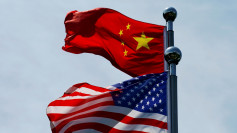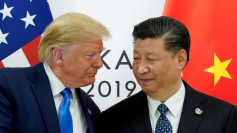Economists continue to puzzle over the specifics of the one-deal process between China and the US last Friday, especially the demand from Washington that Beijing imports an additional $200 billion of American goods and services over two years.
Based on a statistics report provided by the U.S. Trade Representative Office, the agreement will nearly increase China's imports from the U.S., which were around US$188 billion in 2017, the last year before tariffs decimated shipments.
China's total goods imports in 2017 amounted to US$1.84 trillion, which means that Washington's demands can be met mathematically, particularly because this does not include services.
More Pressure On China
When Beijing returns to the rate of 2017 and adds $200 billion, over two years it would purchase $576 billion. However, this would create a trade disruption, substituting other countries' imports and potentially inviting animosity at the World Trade Organisation.
Several exporters toasted on the moratorium on new tariffs and a rollback from others, with some industries poised for a bumper payday in America.
Analysts said that agriculture will be a big part of the deal, with US trade representative Robert Lighthizer telling US broadcaster CBS that over two years China has agreed to buy $80 billion in agricultural products, although this figure has not been verified by China.
Throughout 2017, China imported $131 billion agricultural goods from around the world, with total US shipments estimated at $29.5 billion in 2012, according to data from the agricultural research firm INTL FCstone.
Furthermore, this indicates that it is technically possible to import $40 billion in American goods per year. It would not be without its issues, however.
Complicated Trade Game
With countries such as Brazil, Argentina, Germany, Australia, New Zealand, and Spain among the major beneficiaries, China has diversified its supplier base over the past two years. It stands to reason that they will be among the losers if the country agrees to the purchase agreement.
Centro Insper Agro Global, a research institute based in Sao Paulo, said Brazil could lose $10 billion - or around 28 percent - of its agricultural exports to China as a result of the first phase agreement and the boost to the US soybeans.
After the two nations concluded a free trade deal in 2008, one-fifth of New Zealand's agricultural exports are now bound for China.
Meanwhile, China's urgent need for pork could help it reach a farming quota, with the African swine fever wiping out up to 100 million pigs as a result of disease or culling since August 2018.
In November, the price of pork rose by 110 percent year-on-year, with the average price of pigs in the US now four times cheaper compared to China's.





